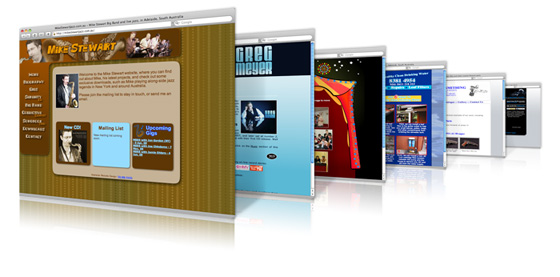Just about everything we try to do online offers us a multitude of options, whether it be social networking, cloud storage devices, or even something as basic as email providers. Quite simply, there are always different services competing for user loyalty.
In social networking, the debate is constant and there’s no “right” answer. Some may still consider Facebook the king of social networks, but the reality is that Twitter is fantastic for those who simply prefer quick sharing and communication. And then there’s Instagram, which is the go-to network for people who like to stay connected through photographs. Beyond that, new options are emerging every day.

In cloud storage, options like Dropbox and iCloud have become quite familiar to many users, but competitors challenge each other in certain spaces. Like in the professional side, where Citrix Sharefile has emerged as a force by offering secure file transfer and organization services specifically tailored to small businesses. In certain environments, these sharing and storage options may be preferable. And, again, new options are constantly coming out of the woodwork.
The same holds true when it comes to web design platforms. There are a number of different hosting and design platforms available to the average user and amateur designer and each one supplies its own perks and benefits. If you’re hoping to start up a new website or just beginning to explore web design, these platforms can be invaluable resources and starting points. But figuring out which is best for you can be a bit tricky. So with that said, here’s a quick look at several of the popular sites out there and what each one offers that separates it from the pack.
Blogger
The main selling point for Blogger is that it’s one of the simplest platforms out there. It lets you create a decent-looking site to use for whatever purpose you need. Only moderate HTML knowledge is really required to manipulate your site the way you want. It’s also a very cheap service, whereas others will ultimately cost you quite a bit. The negative aspect of Blogger is its design. Customization is always an option, but Blogger sites are fairly recognizable and often look like a more cheap(ish) blog than a professionally maintained website.
WordPress
The key benefit of WordPress is that, put simply, you can create the most professional looking site—if, that is, you know what you’re doing. The learning curve to make a truly professional looking site on WordPress is quite steep. You’ll inevitably need to study up on CSS (Cascading Style Sheets), because even a little knowledge will be necessary in designing your pages. Once you get the hang of it, however, WordPress offers you incredible customization options along with top quality regulation of content. Users are able to set up tiered access to sites, allowing for editors, writers, and administrators all with different capabilities. Comments and social network connection are also fairly simple to regulate. It’s also worth noting that WordPress, while free to start, quickly gets expensive. From purchasing a domain name, to buying up design and functionality packages, it all adds up.
Tumblr
Tumblr is the perfect service for those looking for quick capability and simple exposure in their websites. Commonly used for photos (and now gifs as well), Tumblr comes with themes, a simple layout, and great user-efficiency. However, customization options in terms of appearance, layout, and capability are limited. Tumblr is generally a bad choice if you’re looking to set up a dynamic, layered site. But for a quick setup or simple function, it can be very useful.
Wix
Founded in 2006, Wix is beginning to emerge as a heavyweight in this field, and is known largely for its simplicity of design when compared to the others. Using fully integrated code to allow for easy adjustments, “drag-and-drop” simplicity, etc., Wix requires minimal coding and advanced knowledge, which allows for ease of use among a wider category of users. Because of this, it isn’t quite as fully customizable as some other options. But if you’re looking for the best mix of quality and convenience, it’s worth considering.
Again, as with any aspect of technology and Internet use, there are a ton of options out there. Comparing them is largely a matter of personal preference and experience. But starting with these four popular options, you will be able to find which is strongest in the areas you care about most.

